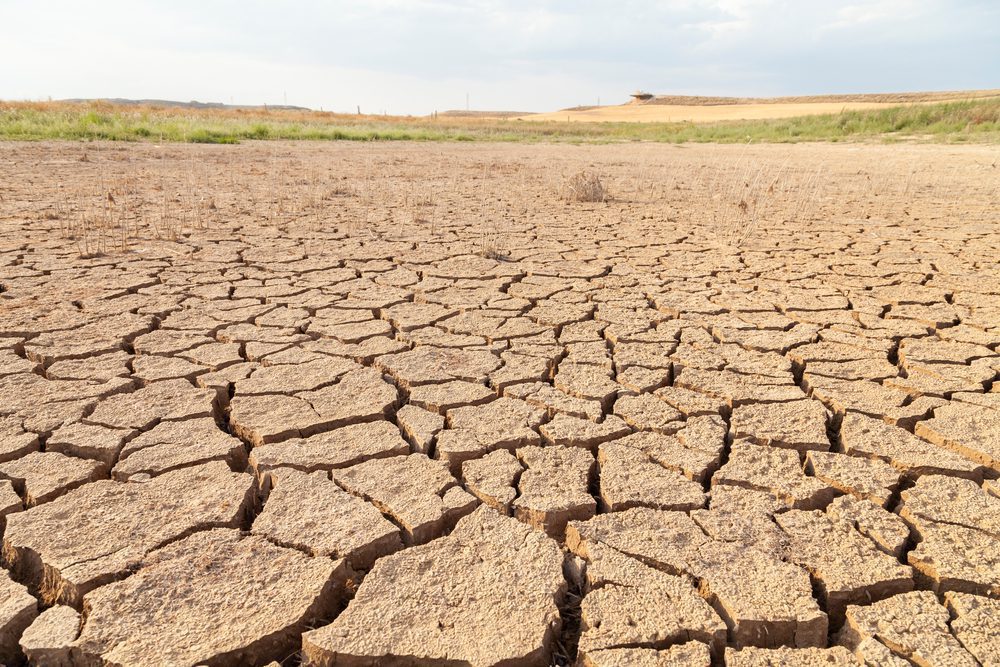
By Colin Wiles, housing consultant.
By the time you read this England will probably be experiencing flooding, but we are just coming out of a prolonged drought, the worst since 1976. I remember that summer well: the grass was brown, the reservoirs disappeared and thousands of people had to queue in the streets for standpipes and water trucks.
Eight of England’s 14 regions have declared a drought emergency and hosepipe bans cover much of the country. It is a familiar tale and proof yet again of our abject failure to manage our water resources over a period of decades.
Most people are now familiar with the record of the privatised water companies – they do their own thing without any kind of national co-ordination. They eject huge amounts of raw sewage into the sea, put profits before their community duty, suck aquifers dry and destroy chalk streams, and allow millions of litres of precious drinking water to disappear through leaks. (Even The Daily Mail is up in arms about this).
Estimates suggest that around a fifth of good drinking water is lost to leaks: three billion litres out of 14 billion each day across the UK. The water companies have consistently failed to build new reservoirs (the last was built in 1991) and have even been selling some off. Meanwhile, they continue to pay vast dividends to their shareholders – £72 billion since privatisation.
It is a national scandal that reflects a failure to recognise the problems of climate change and to plan accordingly – which is perhaps why 83% of the public would like to see the water companies re-nationalised.
In 2012, I wrote an article called “We’ll Need More Tanks”, commenting on a recent trip to the Alpujarras region of Spain where an ingenious water collection and storage system of acequias (runnels) and albergas (tanks), developed by the Moors, allow every drop of water to be collected and used over the hot summers.
We have a lot to learn from other countries. Climate change means wetter winters and long dry summers, but we continue to allow too much water to disappear into the sea instead of collecting it during the winter for use in the summer.
But, even if the water companies fail to improve their performance, the housing sector can do a lot more. Some German friends stayed recently and described how their 17-year-old son spent lockdown on a project to fit a 7,000 litre underground tank in their garden to collect rainwater.
This involved the removal of 10 cubic metres of soil that he dug out by hand. Luckily, they found someone who wanted to fill in an old swimming pool so one hole was dug and another was filled in. What an achievement!
The average British roof could harvest up to 85,000 litres of rainwater each year and all of it could be used around the house, flushing the WC, washing the car, watering the garden, thus saving precious drinking water, but instead, apart from the odd modest-sized water butt, most of our homes allow this precious, pure water to go into sewers and soakaways. We need to think on a much bigger scale.
Each of us uses around 145 litres of water a day (it is 121 litres in Germany and about a tenth of that in Ethiopia) and the biggest users in the house are showers and toilets, using about half of daily consumption – around 25% each.
It is a scandal that good drinking water is being used to flush toilets when grey water could be used. Likewise, water from showers and baths could be harvested for this purpose. If we used grey water properly, we could reduce our daily water needs from the water companies by up to 50%.
The Building Regulations Approved Document H explains how foul and waste water should be disposed of from a house or flat. Basically, water from a WC, bidet or kitchen sink used for food preparation must go to a foul sewer or septic tank, but water from a bath, handbasin or shower can be diverted for other uses such as flushing toilets or watering the garden.
It would be a simple measure to amend the Building Regulations to require both roof and grey water to be harvested and diverted to large above ground or underground tanks in new homes where it can be filtered and used for flushing toilets, watering the garden and other uses. Blocks of flats could have a grey water tank in the roof used for flushing toilets.
It is not beyond rocket science to achieve this. Housebuilders would no doubt complain about the additional cost but responding to climate change will clearly cost money, and would we prefer to rely upon bottled water and standpipes in the streets for evermore?
This simple measure could help to protect our precious potable water supplies and make the country more resilient against drought. But housing providers could take a lead on this without legislation. Let’s show what we can do.





